It is about prayers and piety, but also about food and festivity.
It's the day before Eid and the bylanes around Jama Masjid in the walled city are crammed with sights and sounds of festivities.
Young Naved holding aloft a big cloud of balloons isn't quite sure what the excitement is all about.
Wearing a purple T-shirt over dirty blue jeans and standing barefoot in front of Jama Masjid's gate number 1, the balloon seller at just six knows about Eid, but not about the month of Ramzan or why so many people have been coming to the mosque.
For many thousands of others in the city, the white domes of the iconic mosque and the streets around it are the places to be in the run up to Eid-ul-Fitr.
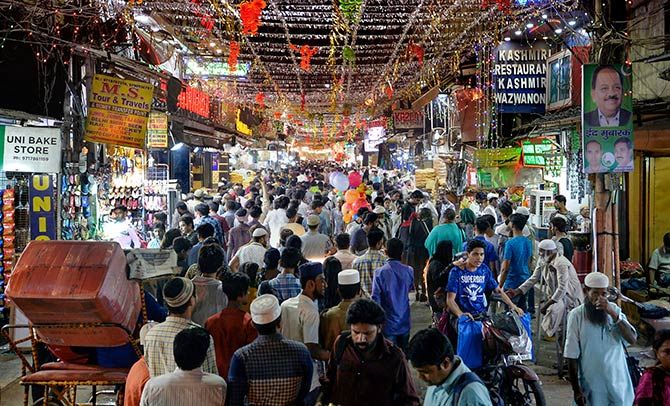
It's about prayers and piety, but also about food and festivity.
As night falls over the city, locals in the area along with people from all over Delhi come to Walled City, crowding in for the sweet and savoury offerings reminiscent of an era stuck in time.
Shops with smoking kebabs on the grill, golden fried chicken in hot oil and piles of thick naan rotis flank both sides of the road on Matia Mahal, the road in front of Jama Masjid.
Asif of 'Cool Point Shahi Tukda' shop, which is famous for its desserts, including rabri, firni, badam milk and shahi tukda, a steaming hot Mughlai bread pudding, says the crowds swell after midnight.
This is the month of maximum business for Asif and the others in the Walled City.
'For iftar most of them go back to their homes, have dinner to break the fast and then they come back with families around midnight after the last namaz of the day,' Asif said.
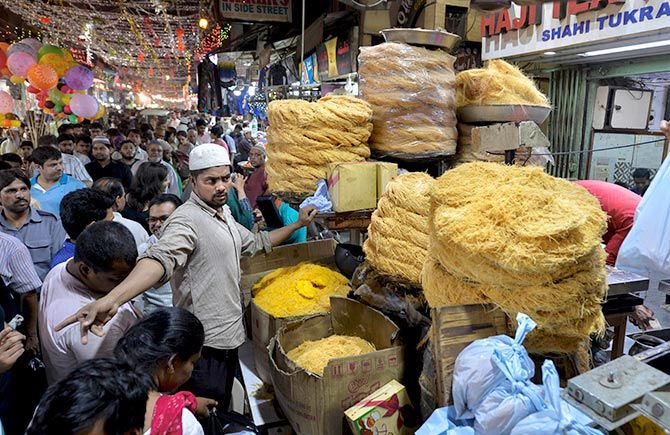
Despite an assortment of desserts on display, he said, most people ask for shahi tukda.
Outside the mosque's gates, Mohammad Rizwan, whose family has been selling 'dahi bada', lentil dumplings dipped in yogurt, for the last 70 years, gets ready for the end of Ramzan and the festival.
Rizwan says he cares little about the sale he has in a day, believing in the Almighty.
'I am the fourth generation selling 'dahi bada'. God has taken care of them, he will take care of us as well. Only he knows how much we make in a day,' he said, opening a steel box of fruit salad to break his fast on the last day of Ramzan.
As the call for namaz reverberates, the crowd thins.
It is time for iftar, the evening meal to break the day-long fast.
Shahnawaz, a local of old Delhi, who comes to the mosque every evening to break his fast, says the crowds have been dwindling over the years. The dust and heat have played a part too.
'Earlier, the crowds were so thick that you couldn't walk,' he said.
Mohammad Abid, a local wedding cards shop owner, concurs with Shahnawaz. Increasing prices have also deterred people from coming to old Delhi.
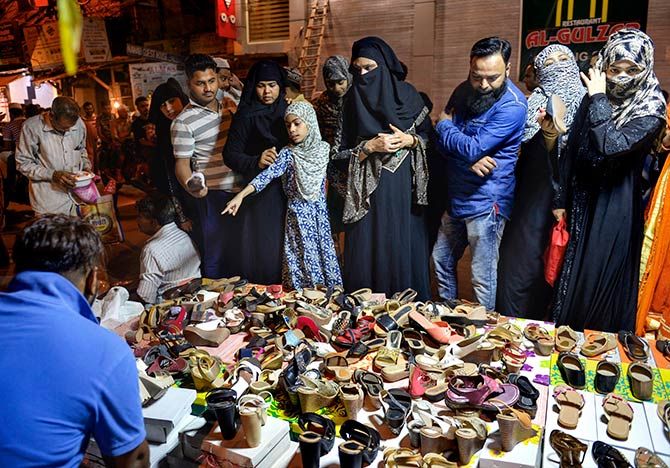
'I have been keeping the fast for last 30 years and the crowd has only decreased. Looking at the prices, it is no surprise.
'People can't afford to come here to eat. And then there is the heat.'
But for now, those worries can be cast aside. It's Eid tomorrow and time for celebrating.
The narrow road is overtaken by an unruly fleet of rickshaws, autos and e-rickshaws. Far in a corner, Naved's balloons are faintly visible.
Even though he looked lost at the words roza and Ramzan, his eyes sparkled excitedly at the mention of Eid.








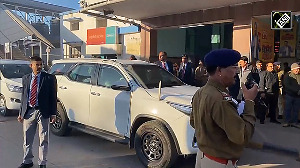

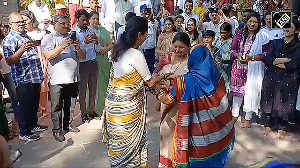
 © 2025 Rediff.com -
© 2025 Rediff.com -